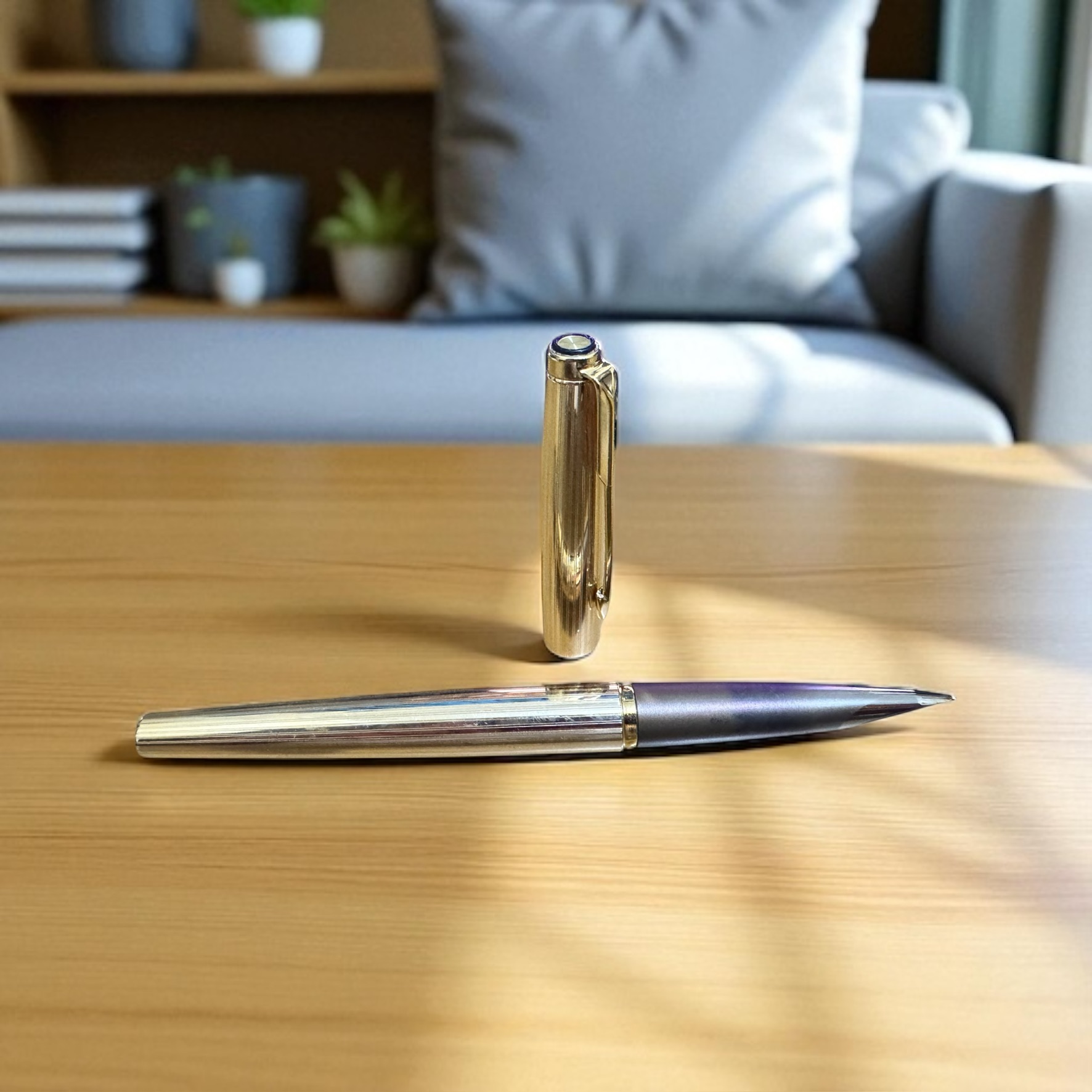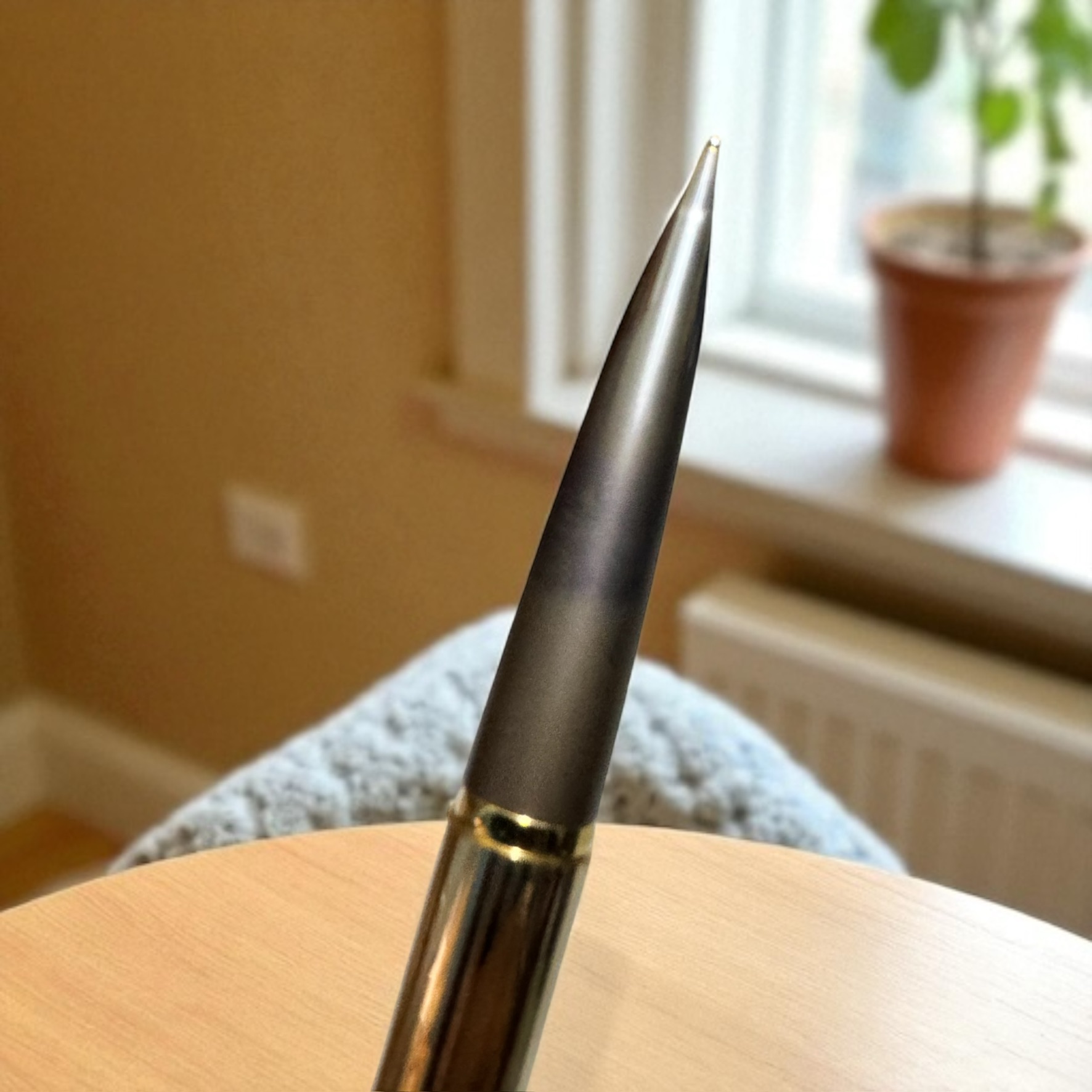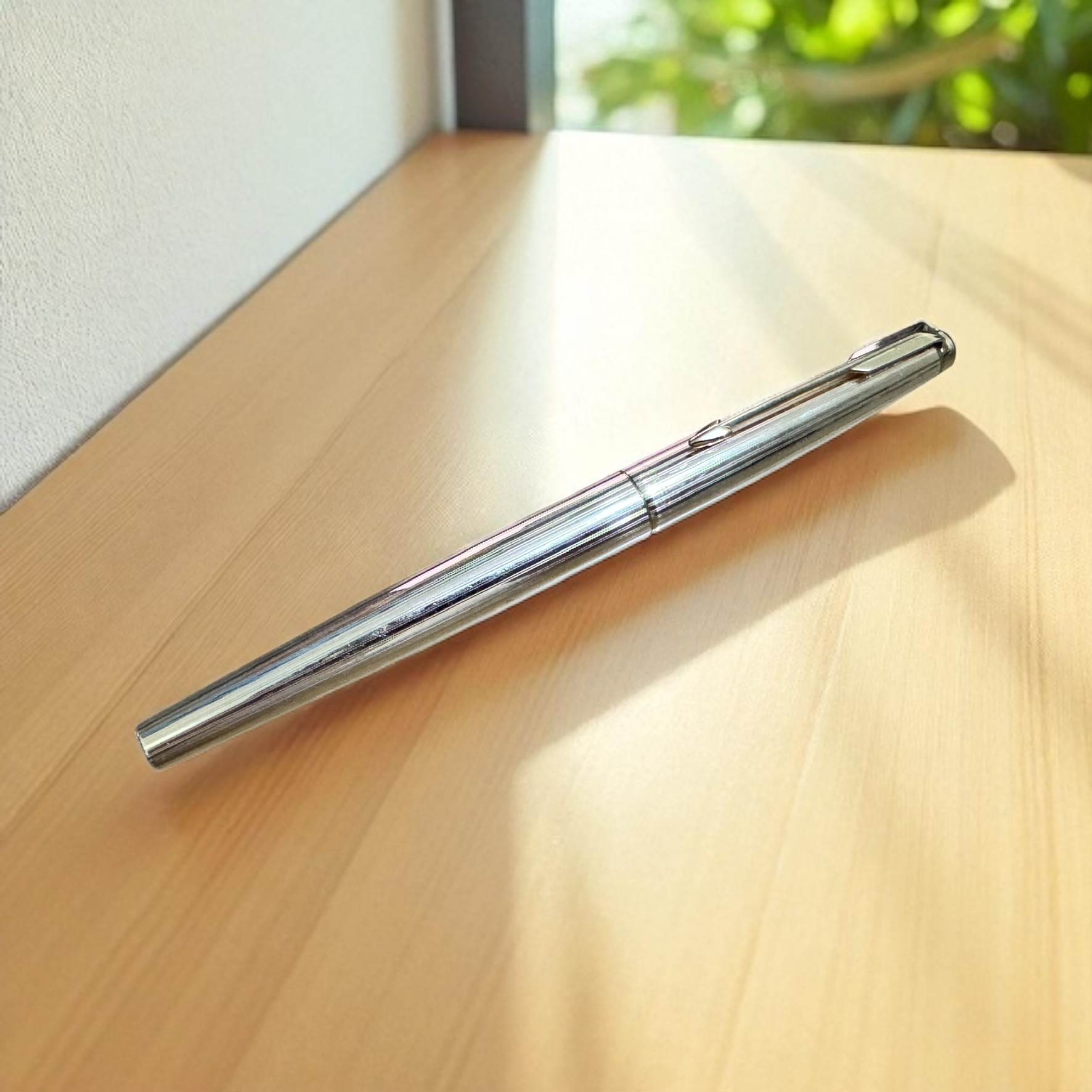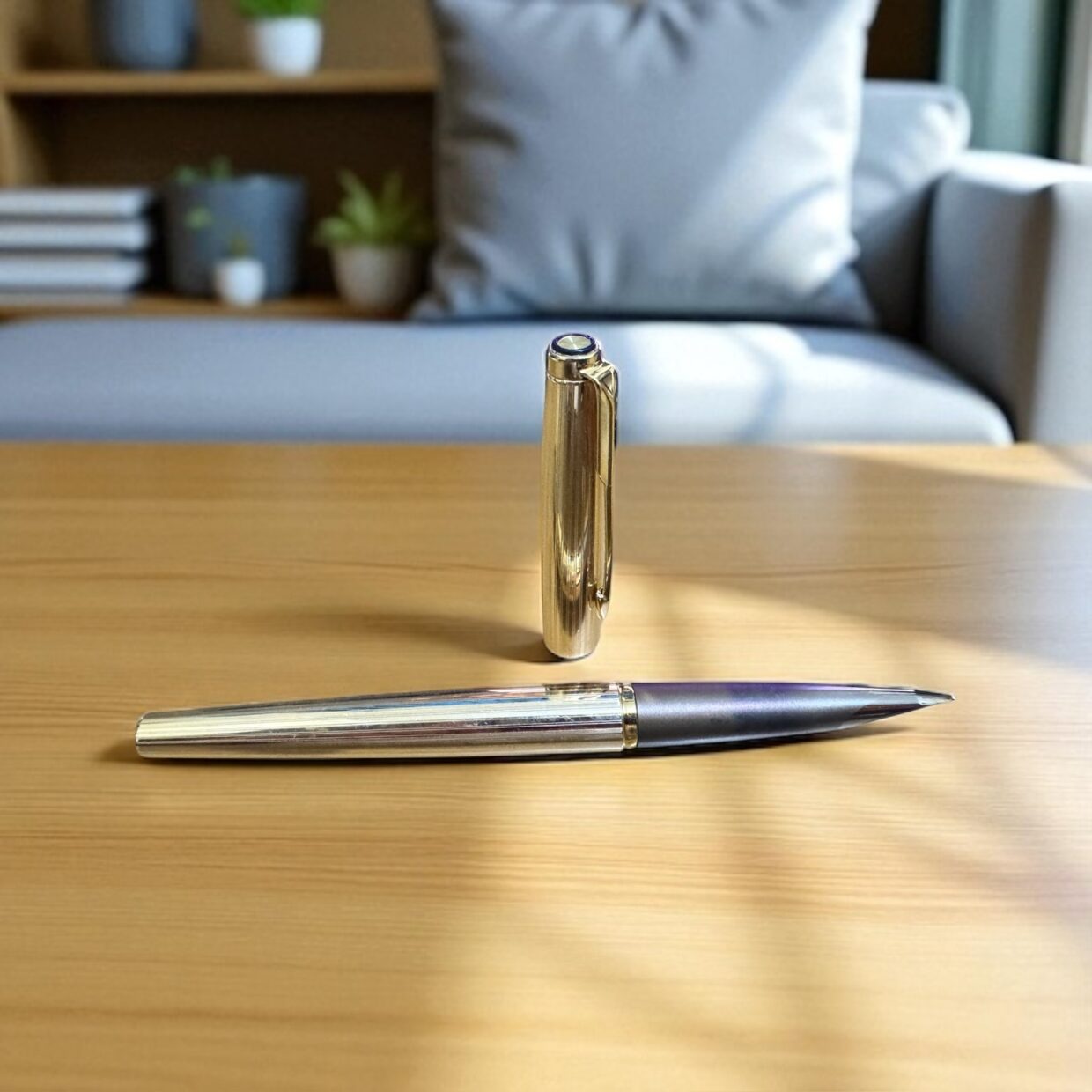The Parker Falcon P50 is a marvel of 1970s industrial design—clean, sharp, and unapologetically modernist. Its most arresting feature is the integrated nib, which is not a separate piece affixed to the section, but rather a fluid continuation of the pen’s body. Displayed here is a textbook Falcon P50: a smooth tapering form of brushed stainless steel that culminates in a precision-formed nib slit. The gold ring provides the only ornamental break in the sleek geometry, drawing a line between the functional and the decorative, the hand and the ink.

The nib itself resembles the beak of a falcon, hence the name—lean, angular, and ready to strike the page. Unlike traditional fountain pens that often feature a distinct section and nib assembly, the Falcon’s nib seems to grow organically from the pen’s body, giving it a monolithic appearance. The effect is both sculptural and futuristic. It’s a pen that feels more like a drafting instrument than a romantic scribbler’s tool—something you’d expect to find in a 1970s NASA engineer’s breast pocket. In the hand, it is firm, balanced, and refreshingly devoid of frills.

Despite its avant-garde styling, the Falcon P50 found genuine popularity among users who appreciated its minimalism and low-maintenance writing experience. While it lacked the flex and flourish of gold-nibbed counterparts, it offered clean, reliable writing with a distinctly modern flair. It was embraced by professionals, engineers, and designers—people who didn’t want their pen to shout, but rather to whisper with authority. The Parker branding was discreet, the functionality superb, and the form factor timeless in its own brutalist elegance.

In comparison to the Pilot Murex and Myu, which also explored integrated nibs, the Falcon P50 expresses a more industrial Western design language. Where the Myu is compact and delicate, and the Murex more organically contoured, the Falcon stands apart with its blunt force geometry and slightly more austere construction. It’s less about refinement and more about statement—a pen not trying to seduce, but to assert. Its legacy lies not in collectability alone, but in having been a successful commercial product that redefined what a fountain pen could look like at the height of stainless steel obsession.


